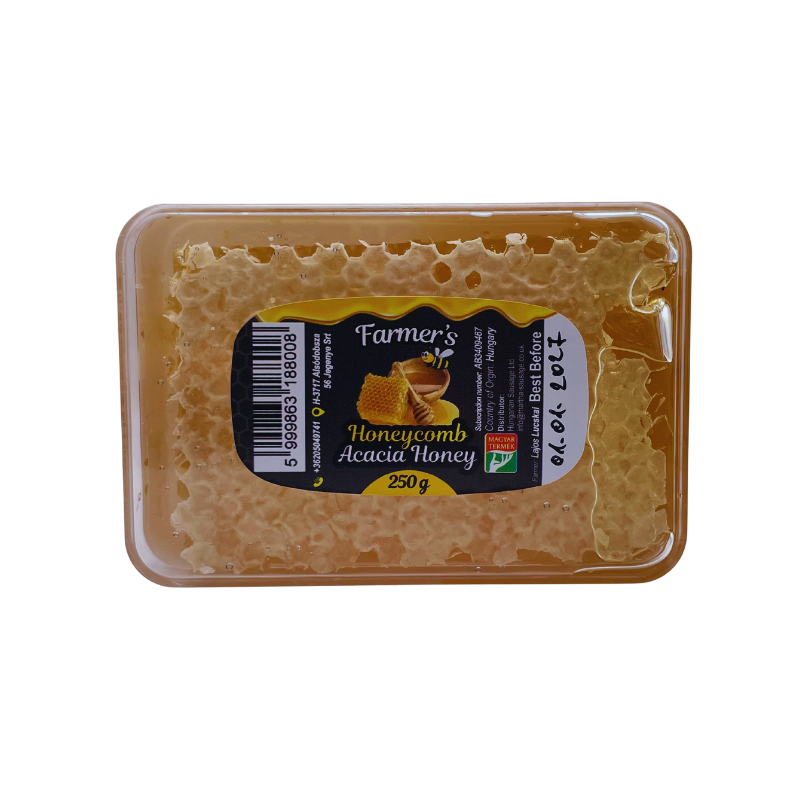The white locust (Robinia pseudoacacia L.) is originally a non-native forest-forming tree species in Hungary, it was introduced to our country from America primarily to bind the quicksand of the Great Plain. Today, about 20% of our forests are locust. About 60% of Europe's locust forests are located in Hungary, which is why locust honey can be called Hungaricum.
The acacia tree is a plant that grows to a height of 20-30 meters and has white clustered inflorescences.
It does not require any artificial treatment, no plant protection!
When to collect:
Depending on the weather, the acacia can bloom in the first weeks of May.
The plant blooms for about 10 days, but a significant part of the honey production is collected in the hives during the “brigade”, within a few days. For these reasons and because the regional differences in flowering times in Hungary allow it, it is possible to extract honey from two acacia areas with different flowering times.
Pollen content:
The acacia flower produces a lot of nectar and little pollen, so those who are sensitive to pollen can try it.
Appearance of honey:
It is a light-colored honey, ranging from yellowish translucent to slightly opalescent greenish yellow, that retains its liquid state for a long time, with a pleasant, mild flavor and acacia flower scent.
Honey composition :
Acacia honey is characterized by a significantly lower amount of glucose (grape sugar) compared to fructose (fruit sugar), which is why pure acacia honey almost never crystallizes (there are only 3 types of honey in the world that retain their fluidity for a long time). Among other things, acacia honey is valuable because it contains 10 of the 11 sugars found in honey.
Uses of honey:
The best known and most widely consumed honey. Its popularity is due to its fluidity and neutral, mild flavor.
It is recommended to consume it in all forms!
Spooned on its own. In drinks: tea, coffee, milk. For meals: spread on bread alone or mixed with butter, in pancakes, cakes, pasta, roasts, sweet and spicy dishes of oriental cuisine.
It is recommended for reducing indigestion caused by excess stomach acid.
Excellent for external treatment of skin lesions, scars, abrasions, and burn marks. Do not apply to open wounds!
And it can be used in beauty care for wraps, massages, saunas...


